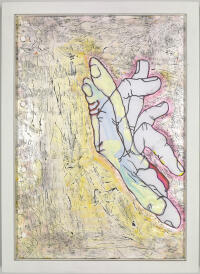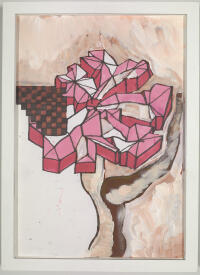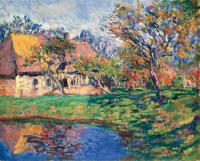Urs Fischer. Kir Royal
09.07.2004 – 26.09.2004
Curated by Mirjam Varadinis.
Location Pfister-Bau (Grosser Ausstellungssaal, ehem. Bührlesaal).
Curated by Mirjam Varadinis.
Location Pfister-Bau (Grosser Ausstellungssaal, ehem. Bührlesaal).
Material Battles by the Shooting Star Urs Fischer
It was outrageous and sensational: Urs Fischer (b. 1973 Zürich) was only 31 years old in 2004, when he filled the 1,300 square meter Bührle-Saal of the Kunsthaus Zurich. Never before had the highly prestigious location, otherwise reserved for thematic exhibitions or retrospectives, been entrusted to such a young artist. And Fischer did not disappoint. He set up the exhibition with enormous force. He cheekily cut up the recently erected panels so that the space was differently arranged, and thus permitted interesting sightlines through them – Fischer raised the exhibition into a total work of art. That made the doubters fall silent at first.
The show, curated by Mirjam Varadinis, was a true battle of materials, which was convincing for its tangible joy in craft and improvisation. One of the works, one which stayed in people’s memories for a long time, showed a naked woman made of wax with a burning wick (What if the Phone Rings). Urs Fischer is a man of action, impetuous and direct, a lover of experiment, always struggling with his materials, working step-by-step – and he was presented like that by the Kunsthaus. In the Kunsthausmagazin the artist is quoted: he constantly loses when fighting with his materials, but that is not failure: ‘Sooner or later the moment comes when the work needs to be turned about. It demands that.’ On the other hand, there were also traditional motifs such as portraits, landscapes and still lives, for Urs Fischer has an excellent understanding of the history of art, even though he lustfully rejects simple categorizations.
The response in the national and international media was vast. Voices in the press oscillated between admiration for the comet-like rise of this shooting star and perplexity about how the work’s contents should be read. ‘Spectacular, and yet rather banal,’ according to one critic (Sabine Altdorfer, Aargauer Zeitung), and Samuel Herzog wrote: ‘He has the space sovereignly in his power […] Nowhere can a line be detected [that shows] what matters to the artist.’ (Neue Zürcher Zeitung). Dominique von Burg opined: ‘The objects in the total work of art function and fascinate, but viewed individually they are at risk of imploding.’ (Kunstbulletin). The copious catalogue includes essays by Mirjam Varadinis, Jörg Heiser and Bruce Henley and was published by the JPR/Ringier-Verlag.
[Peter Stohler]
The show, curated by Mirjam Varadinis, was a true battle of materials, which was convincing for its tangible joy in craft and improvisation.


